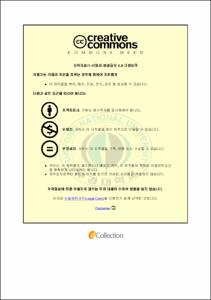RO 해수담수화를 위한 모래여과 공정의 최적화와 RO 생산수 후처리
- Alternative Title
- Optimization of sand filtration pocess for RO desalination and posttreatment of RO permeate
- Abstract
- Seawater desalination is the technique of obtaining fresh water from seawater by removing salinity. Recently, reverse osmosis (RO) desalination for seawater application considered the most economical process available. It is necessary to perform pre-treatment and post-treatment to make seawater drinkable. In order to make a successful RO pre-treatment of raw water effective, a conventional pre-treatment which can be used widely, is inexpensive, and able to achieve the feed water quality is needed. Ferric chloride (FeCl₃) has been shown to be the most successful coagulant in RO pre-treatment application. According to the study, ferric chloride would cause accelerated fouling in the RO membrane when the oxidized form of iron is more than 0.05 mg/L. Most iron is removed by sand filtration, although some iron could pass through the sand filtration and negatively affect the RO membrane. Meanwhile, control of corrosiveness is necessary during post-treatment in order to drink RO permeate. In general, it is usual to use lime and CO₂ to control corrosion of RO permeate, and needs careful handling in the field.
Therefore, this research is focused on the optimization of sand filtration as a pre-treatment, and control of corrosion as a post-treatment of seawater desalination by reverse osmosis. The sand filtration experiment is conducted by different coagulant doses, coagulation pH, mixing conditions, and filter media depths. And then the turbidity, SDI_(15), particle counts, Fe concentration, and RO permeate flux are evaluated. The experiment of corrosive control is conducted by different CO₂ injection methods, injection sequences of lime & CO₂, injection time differences, mixing ratios of tap water-RO permeates, and pH level. Then the turbidity, pH, hardness, alkalinity, temperature, electrical conductivity, and LSI are evaluated. The result of the sand-filtration experiment is similar in Fe ion concentration and SDI, regardless of coagulant dose and coagulation pH, except for the coagulant dose 30 mg/L at pH 6. The results also show a decrease in Fe ion concentration and SDI as the filter media depth is increased. With the flocculation, in addition, proper pre-treatment water quality through the RO process could be more easily achieved. The result of the post-treatment experiments is similar in turbidity, hardness, alkalinity and LSI regardless of CO₂ injection method and injection sequence of lime & CO₂. But there is great difference in turbidity as the injection time difference is changed. Also, results show an increase of turbidity as the ratio of tap water is increased in mixed water. Although the others conditions remained the same, the test shows that pH is an important factor in post-treatment, where the result of LSI is opposite given that there is a minus value when pH is 8 and a plus value when pH is 9.
- Issued Date
- 2014
- Awarded Date
- 2014. 2
- Type
- Dissertation
- Publisher
- 부경대학교
- Alternative Author(s)
- Jo, Myeong Heum
- Affiliation
- 대학원
- Department
- 대학원 환경공학과
- Advisor
- 강임석
- Table Of Contents
- < 목 차 >
Chapter I 1
제 1 장 서론 2
제 2 장 문헌연구 4
2.1 해수의 특성 4
2.1.1 해수담수화 방법 6
2.2 Revers Osmosis 8
2.2.1 RO mechanism 8
2.2.2 RO 전처리 공정 9
2.3 응집 (Coagulation) 13
2.3.1 Coagulation mechanism 13
2.3.2 Fe(III)의 가수분해와 침전 17
2.3.3 Ferric chloride와 alum의 비교 21
2.3.4 Electrical double layer 23
2.4 여과공정의 특성 26
2.4.1 여과 mechanism 26
2.4.2 직접여과 공정 29
2.4.3 역세척 공정 32
2.5 역삼투 (Reverse Osmosis; RO) 34
2.5.1 역삼투 : 기본원리 34
2.5.2 RO 막에서의 잔류 금속 침전 예방 40
2.5.3 Silt density index 42
제 3 장 재료 및 연구 방법 46
3.1 원수의 수질 특성 46
3.2 수질분석 항목 및 방법 48
3.2.1 탁도 및 particle counts 48
3.2.2 SDI (Silt density index) 48
3.2.3 pH 및 전기전도도 49
3.3 실험 장치 및 방법 50
3.3.1 응집 실험 50
3.3.2 모래여과조 실험 51
제 4 장 결과 및 고찰 53
4.1 응집제 주입농도 결정 53
4.2 응집-여과 공정에서의 철 유출 54
4.2.1 모래여과 유출수의 particle size 변화 54
4.2.2 응집제 주입농도의 영향 57
4.2.3 응집 pH의 영향 60
4.2.4 응집 시 완속교반의 영향 63
4.2.5 여재 충진 높이에 따른 유출 철 농도 65
4.2.6 유출된 철 농도에 따른 RO막 투과 flux의 변화 68
제 5 장 결론 72
Chapter II 75
제 1 장 서론 76
제 2 장 이론적 배경 78
2.1 상수도의 부식성 문제 78
2.2 RO 생산수 수질 특성 79
2.3 외국의 가이드라인 86
2.4 부식성 제어기법 88
2.4.1 이론과 구성 88
2.4.2 LSI 영향인자 88
제 3 장 재료 및 연구 방법 91
3.1 생산수 수질 특성 91
3.2 측정항목 92
3.3 분석기기 및 방법 93
3.4 실험방법 94
제 4 장 결과 및 고찰 96
4.1 CO₂주입방식에 따른 수질 변화 96
4.2 Lime water와 CO₂주입순서에 따른 수질 변화 99
4.3 RO 생산수와 수돗물을 혼합한 시수의 수질 변화 103
4.4 pH 8.0∼9.0로 조절한 생산수(BWRO)의 수질 변화 106
제 5 장 결론 111
참고문헌 113
- Degree
- Master
- Files in This Item:
-
-
Download
 RO 해수담수화를 위한 모래여과 공정의 최적화와 RO 생산수 후처리.pdf
기타 데이터 / 2.26 MB / Adobe PDF
RO 해수담수화를 위한 모래여과 공정의 최적화와 RO 생산수 후처리.pdf
기타 데이터 / 2.26 MB / Adobe PDF
-
Items in Repository are protected by copyright, with all rights reserved, unless otherwise indicated.